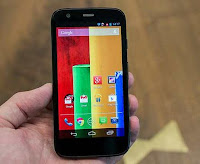Some of the free ones are open source software (OSS), meaning their code too is available for modification and use.
Main features of an LMS
- Acquisitions (buy books etc.)
- Cataloguing (classify and index books etc.)
- Circulation (lend and receive)
- Serials (track periodicals like magazines)
- Online Public Access Catalog or OPAC (online access for library members)
LMS - products
DIY or find a service provider
The software may be installed on your own server or on cloud. This would be cheaper - however, depending on your choice, it needs ongoing maintenance of software and hardware (apply software updates, fix security issues, upgrade hardware etc.). This option can be considered if you have a couple of people in your organization who are familiar with the relevant technology and can handle ongoing maintenance.
Alternatively, there are (third-party) service providers who take care of the software and hardware, maintenance etc. While the cost for this option would be higher, it is useful if you do not have people with technical knowledge, or if you need to save their time. The main thing here would be to find a good, reliable service provider. A trial period would help you to check out their service. Talking to an existing customer would help.
Table for comparison of LMS products
To start with, it would be a good idea to list your requirements at a high level. Then, use a table, with columns like those below, to compare the available software systems.
- Product (linked to home page)
- Target (targeted for specific types of libraries? e.g. K12, scientific etc.)
- Unique features
- Standards for communication: MARC, Z39:5. Modern alternatives to these.
- Authentication standards: LDAP
- Interfaces for staff, members: browser-based software is better
- Offline usage (when connectivity to LMS server is not available)
- Number of Installations, worldwide and specifically in your country.
- Contributors: community or company. Is community active and dedicated?
- Operating Systems supported: Hosting on Linux may cost less. Mention if software package has to be built by ourselves.
- Hosting service providers: cost, extent of technical support, whether they offer help in initial setup, backup and restore procedures, support hours, on-premise support etc.
- Total cost to institution
- Year it began: product might be more stable, but check if technology is outdated and hampers usage.
- Technology stack: to evaluate if your organization has in-house expertise, is the stack outdated and hampers usage or finding expertise.
Usage in India
Koha seems to be popular choice in India. (LibSys, a commercial LMS, is also popular in India.)
- Koha is supported in India by the AU-KBC Research Centre and other companies.
- Koha has a demo site where one can try it out (this demo link worked).
- In Tamil Nadu, the Connemara Public Library and 32 district libraries and the Anna Centenary Library use Koha. In Chennai, the MIT Campus Library and Vidyodaya school also use it, according to the AU-KBC Research Centre site.


